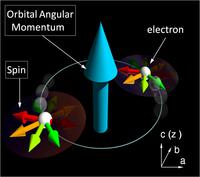 Bednorz and
Müller’s Nobel Prize winning 1986 paper on doped La
2
CuO
4
is best known for the discovery of high temperature superconductivity, but I
will argue that its influence was broader still. Prior to their work, research on oxides was
largely the domain of fields like chemistry and earth sciences. Condensed matter physics still concentrated
on compounds that were less complex from the materials science point of view. A quiet revolution has taken place over the
past quarter of a century. Experiments
performed in the past five years have shown the extent to which complex oxides
are ‘coming of age’. Various ingenious
crystal growth and thin film preparation techniques mean that they can be
prepared with mean free paths of thousands of lattice spacings, opening up a range
of new possibilities for both fundamental and applied science.
Bednorz and
Müller’s Nobel Prize winning 1986 paper on doped La
2
CuO
4
is best known for the discovery of high temperature superconductivity, but I
will argue that its influence was broader still. Prior to their work, research on oxides was
largely the domain of fields like chemistry and earth sciences. Condensed matter physics still concentrated
on compounds that were less complex from the materials science point of view. A quiet revolution has taken place over the
past quarter of a century. Experiments
performed in the past five years have shown the extent to which complex oxides
are ‘coming of age’. Various ingenious
crystal growth and thin film preparation techniques mean that they can be
prepared with mean free paths of thousands of lattice spacings, opening up a range
of new possibilities for both fundamental and applied science.

